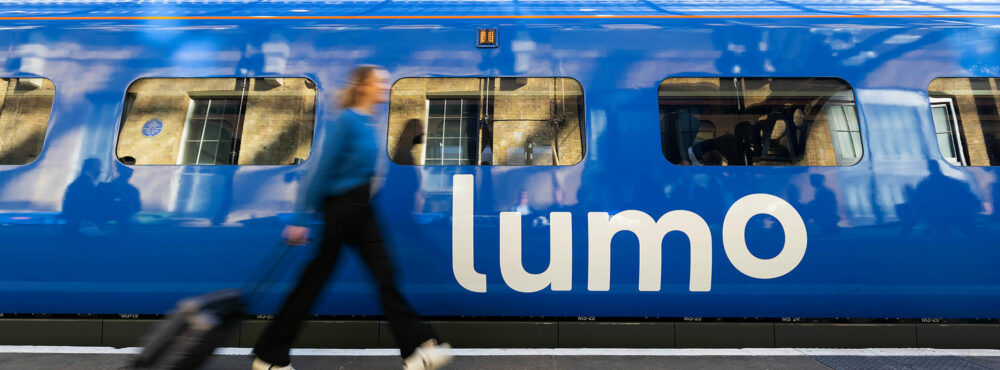I’ve travelled with Lumo

I recently had occasion for a return trip from Newcastle to London. This is a trip which I’d preferentially take by train, but have previously ended up flying as a result of the comparative cost.
In the time since I used to do this journey frequently, a new locally based operator—Lumo—has begun serving the East Coast Mainline, with the express intention of getting people onto electric trains instead of flying. It’s been running for a little over a year. I thought I’d give it a go.
On the day I booked my tickets, the Lumo return journey cost £64.80.
The LNER fare for similar departure times was £155.40. The British Airways economy fare for similar times was £271.44, but I would never have paid (or compared with) that figure. I would, unfairly, have compared the prices to the £85 + some Avios price of a BA return in business class… I’m a delicate flower. At those LNER and BA prices, I would probably have opted for BA, rather than paying nearly ‘twice as much’ for LNER standard class.
The Lumo fare substantially undercuts both options. Having whinged a decade ago about the variability of ticket prices, it’s worth noting that Lumo has far fewer price points in its ticketing structure than LNER—though Lumo can’t match the £8.10 single fare I once paid with the old operator, East Coast.
To a certain extent, a train is a train: there isn’t always much to pick between them. Lumo’s are all-electric, which is environmentally advantageous.
The seats are in a standard 2-2 layout, almost all airline-style, with tray tables. The trains are near-identical to LNER Azuma ones, with the same colourblind unfriendly traffic-light seat reservation indicators. It’s a single-class service, and my train had five coaches.
Lumo has gone to town on making their interior an on-brand blue, supplemented by light grey. It felt a bit cold and austere to me, and the plain blue moquette really showed the dirt, but I’m no interior designer. The lighting is unpleasantly bright white, almost clinical, and not at all conducive to relaxation. The luggage rack is glazed with a bluish glass, which looks mirrored and bronze-tinted when packed with bags. It’s a weird choice, but how much time does anyone spend looking at the underside of luggage racks?
The seats have airline-like flappy headrests for snoozing, and individual reading lights above the tray table. The tray table is extendable, which means that you can actually work on a laptop on it. There’s one three-pin socket and two USB-A sockets shared between each pair of seats. The seats are firm: I miss the padding on the older, non-Azuma LNER trains. The arm rests are the narrowest I’ve ever seen, no more than a couple of centimetres in width, but I suppose that’s probably a compromise to keep the seats themselves as wide as practically possible. The legroom was fine.
The service was almost non-stop, save for an alight-only stop at Stevenage on my southbound trip. There is something luxurious and relaxing about non-stop services: it’s nice to settle in and know that the train isn’t about to become suddenly crowded at the next stop.
Food is available to pre-order if boarding at King’s Cross or Edinburgh. This is delivered to your reserved seat, and perhaps as a consequence of this, the conductor was militant about people sitting in their reserved seat and nowhere else. A cashless trolley paraded through the train for impulse purchases. Lumo didn’t ply me with endless mini bottles of complementary champagne like BA Club Europe, but my pre-ordered food was delivered almost immediately after leaving King’s Cross, homeward-bound.
While my southbound journey was perfectly to time, my return was delayed by a little under an hour, so I automatically received half my fare back.
All things considered, and based mainly on the price and reduced ecological impact, Lumo will be my first choice next time.
This post was filed under: Post-a-day 2023, Travel, Lumo, Trains.